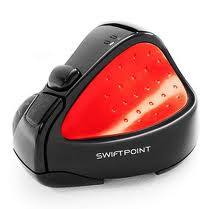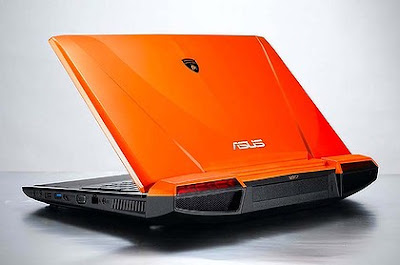The Apple MacBook Pro Z0J72B/A 13.3" Refurbished Laptop is driven by the potent 2.4 GHz Intel Core2 Duo Processor P8600 and runs Apple's stunning Mac OS X v10.6 Snow Leopard operating system. A 320GB hard drive and 4GB of RAM provide plenty of storage space and multitasking capability for your everyday computing needs. Wonderfully full-featured and yet just 24.1 mm thick, the Apple MacBook Pro Z0J72B/A 13.3" Refurbished Laptop is a stunning showcase of Apple's design prowess and a hard act for any laptop to follow! Constructed with an aluminium unibody enclosure for extreme durability and long-lasting good looks, the 13" Apple MacBook Pro Z0J72B/A is the perfect embodiment of both form and function. The revolutionary chassis is fashioned from a solid block of metal, eliminating unnecessary seams and improving strength while keeping the notebook weight to a very portable 2.04 kg.
The Apple MacBook Pro Z0J72B/A 13.3" Refurbished Laptop is a joy to carry on your day-to-day business, so you'll be pleased to know the built-in battery lasts up to 10 hours on a single charge. Thanks to advanced chemistry and Adaptive Charging it can also withstand roughly 3x more charge cycles than a conventional laptop battery before needing to be replaced - which means more hassle-free computing and less environmental waste. When it comes to performance, the 13-inch Apple MacBook Pro Z0J72B/A 13.3" Refurbished Laptop blazes ahead with Intel's dual-core Core 2 Duo CPU. Ultra-efficient NVIDIA GeForce 320M graphics drive an LED-backlit, widescreen display with 1280 x 800 pixels, offering a gorgeous view of your digital world. The latest Wireless-N networking and Bluetooth 2.1 EDR are also present, as is Gigabit Ethernet, an illuminated keyboard, a glass Multi-Touch trackpad, a superfast FireWire 800 port, built-in iSight camera, and much more! This refurbished laptop has been professionally checked, tested and repackaged. It comes with a reassuring 12-month warranty and offers fantastic savings over the 'as new' price.
General Information Processor Intel Core2 Duo Processor P8600 - 2.40 GHz - 1066 MHz FSB - 3 MB L2 cache - Dual Core Operating System Mac OS X v10.6 Snow Leopard RAM - 4 GB 1066 MHz DDR3 memory Graphics card NVIDIA GeForce 320M graphics processor - 256 MB DDR3 SDRAM shared with main memory Screen type LCD widescreen Screen resolution - WXGA - 1280 x 800 Screen size 13.3-inch Screen features LED backlight Glossy 16:10 aspect ratio Hard drive 320 GB SATA 5400 rpm Optical disk drive 8x slot-loading SuperDrive (DVD±R DL/DVD±RW/CD-RW) Memory card reader SD memory card slot USB 2 x USB 2.0 FireWire 1 x FireWire 800 Modem/Ethernet 10/100/1000BASE-T Gigabit Ethernet (1 x RJ-45 connector) WiFi AirPort Extreme WiFi Based on IEEE 802.11n specification Also IEEE 802.11a/b/g compatible Bluetooth Bluetooth 2.1 + EDR (Enhanced Data Rate) Video interface Mini DisplayPort DVI, VGA, dual-link DVI, and HDMI output possible with optional adaptors.
(sold separately) Audio interface Combined headphone/line in (supports digital output) TV output No Extension card slot No Sound Built-in stereo speakers Built-in omnidirectional microphone Webcam Built-in iSight camera Keyboard & Mouse Backlit full-size keyboard Multi-Touch trackpad for precise cursor control; supports inertial scrolling, pinch, rotate, swipe, three-finger swipe, four-finger swipe, tap, double-tap and drag capabilities Battery - built-in lithium-polymer battery - 63.5 watt-hour capacity Additional features Precision aluminium unibody construction MagSafe power port Kensington lock slot Highly recyclable aluminium and glass enclosure Mercury-free display Arsenic-free display glass BFR-free PVC-free Reduced packaging volume Meets ENERGY STAR Version 5.0 requirements Rated EPEAT Gold Size 24.1 x 325 x 227 mm (H x W x D) Weight 2.04 kg.
The Apple MacBook Pro Z0J72B/A 13.3" Refurbished Laptop is a joy to carry on your day-to-day business, so you'll be pleased to know the built-in battery lasts up to 10 hours on a single charge. Thanks to advanced chemistry and Adaptive Charging it can also withstand roughly 3x more charge cycles than a conventional laptop battery before needing to be replaced - which means more hassle-free computing and less environmental waste. When it comes to performance, the 13-inch Apple MacBook Pro Z0J72B/A 13.3" Refurbished Laptop blazes ahead with Intel's dual-core Core 2 Duo CPU. Ultra-efficient NVIDIA GeForce 320M graphics drive an LED-backlit, widescreen display with 1280 x 800 pixels, offering a gorgeous view of your digital world. The latest Wireless-N networking and Bluetooth 2.1 EDR are also present, as is Gigabit Ethernet, an illuminated keyboard, a glass Multi-Touch trackpad, a superfast FireWire 800 port, built-in iSight camera, and much more! This refurbished laptop has been professionally checked, tested and repackaged. It comes with a reassuring 12-month warranty and offers fantastic savings over the 'as new' price.
General Information Processor Intel Core2 Duo Processor P8600 - 2.40 GHz - 1066 MHz FSB - 3 MB L2 cache - Dual Core Operating System Mac OS X v10.6 Snow Leopard RAM - 4 GB 1066 MHz DDR3 memory Graphics card NVIDIA GeForce 320M graphics processor - 256 MB DDR3 SDRAM shared with main memory Screen type LCD widescreen Screen resolution - WXGA - 1280 x 800 Screen size 13.3-inch Screen features LED backlight Glossy 16:10 aspect ratio Hard drive 320 GB SATA 5400 rpm Optical disk drive 8x slot-loading SuperDrive (DVD±R DL/DVD±RW/CD-RW) Memory card reader SD memory card slot USB 2 x USB 2.0 FireWire 1 x FireWire 800 Modem/Ethernet 10/100/1000BASE-T Gigabit Ethernet (1 x RJ-45 connector) WiFi AirPort Extreme WiFi Based on IEEE 802.11n specification Also IEEE 802.11a/b/g compatible Bluetooth Bluetooth 2.1 + EDR (Enhanced Data Rate) Video interface Mini DisplayPort DVI, VGA, dual-link DVI, and HDMI output possible with optional adaptors.
(sold separately) Audio interface Combined headphone/line in (supports digital output) TV output No Extension card slot No Sound Built-in stereo speakers Built-in omnidirectional microphone Webcam Built-in iSight camera Keyboard & Mouse Backlit full-size keyboard Multi-Touch trackpad for precise cursor control; supports inertial scrolling, pinch, rotate, swipe, three-finger swipe, four-finger swipe, tap, double-tap and drag capabilities Battery - built-in lithium-polymer battery - 63.5 watt-hour capacity Additional features Precision aluminium unibody construction MagSafe power port Kensington lock slot Highly recyclable aluminium and glass enclosure Mercury-free display Arsenic-free display glass BFR-free PVC-free Reduced packaging volume Meets ENERGY STAR Version 5.0 requirements Rated EPEAT Gold Size 24.1 x 325 x 227 mm (H x W x D) Weight 2.04 kg.


































